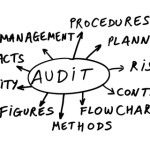 “Trust is the one thing that changes everything” ~ Stephen Covey
“Trust is the one thing that changes everything” ~ Stephen Covey
In the context of client / agency relationships, transparency simply means removing any element of doubt. Whether in the context of an agency’s earned revenue, billing accuracy, net payments to third-party vendors or the agency’s resource investment on behalf of a client.
The best means of achieving transparency is through an agency contract compliance and financial management audit and or the implementation of a continuous performance monitoring program focused on these aspects of the relationship.
After all, the marketing investment made by most advertisers is material and often ranks as one of, if not the largest SG&A expenditures. Which is precisely why marketing budgets are currently drawing more C-Suite attention from finance, procurement and internal audit personnel, working in conjunction with their peers in marketing.
This type of cross-functional oversight is a good thing. Particularly when striving to build a unified team by earning each other’s trust across the organization. Additionally, experience has shown that sound enterprise accountability and assurance programs can create value for all parties:
- Client financial team members benefit from the specific knowledge as to how their marketing dollars are being managed at each phase of the marketing investment cycle.
- Procurement gains insights related to the organization’s return on agency fee investment, optimization of contract language and opportunities for potential future cost avoidance initiatives (not related to agency fees).
- The internal audit group gains confidence in knowing that contract terms and organizational controls are being adhered to and if not, that actions are being recommended to shore up potential gaps and risks.
- Marketing gains feedback on the agency’s financial management performance, while identifying opportunities for process improvements that can boost the efficiency and effectiveness of their marketing investment.
- The agency benefits from direct feedback on their performance in this important area, the opportunity for interaction with and exposure to a broad cross-section of senior client management and the trust and associated confidence that comes with receiving a solid “report card.”
Over time, agency contract compliance and financial management performance audits have evolved in a manner which has yielded in-depth institutional knowledge and feedback that greatly assists advertisers in stewarding their marketing organizations and agency network partners. This is occurring during a period of time where the complexities of the advertising and media marketplace have expanded significantly, increasing an advertiser’s risk / reward considerations.
Of late, there has been significant industry concerns relating to the questionable transparency relative to the disposition of an advertiser’s investment. How much money flows through to third-party vendors versus what is retained by the agency? What percentage of activity is directed to the agency’s affiliates or holding company, without client insight or approval rights? Is the agency earning excessive float income on the client’s marketing spend?
Rightly or wrongly, in the wake of these concerns, advertising agencies have found themselves all painted with the same broad brush of operating under an opaque modus operandi. This in turn has raised the specter of mistrust among many on the client-side, which has had negative implications on the strength (and length) of client-agency relationships. Needless to say, this is not a healthy dynamic for generating above average in-market results, solid returns on marketing investment, fair and fully disclosed agency remuneration levels or in building strong relationships.
Time and time again, we have seen clients and agencies alike benefit from the investment in compliance audits and the sustained comfort levels that come with ongoing performance monitoring programs. The chief benefit to both parties is the assurance of knowing that the advertiser’s investment is being well managed by their agency partners and the insight to fuel future process improvements.
In the end, these programs represent the quickest and most economical path to restoring trust between clients and their agencies, allowing both to focus on building strong brands and increasing demand generation. In the words of author Joel Peterson:
“Trust doesn’t just happen. It takes initiation, nurture, evaluation and repair.”









